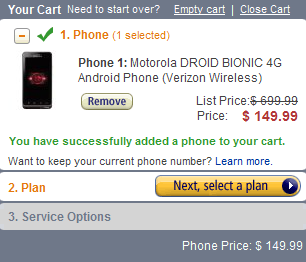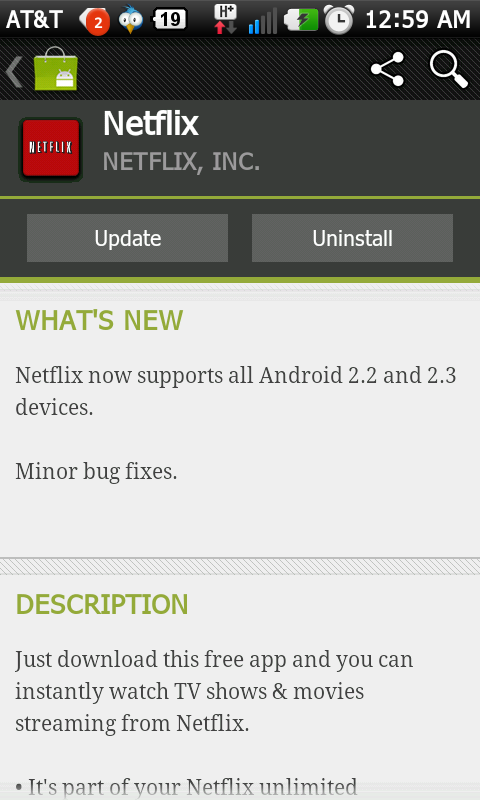We see how Samsung’s big Galaxy Tab 10.1 compares to Sony’s new Tablet SWe see how Samsung’s big Galaxy Tab 10.1 compares to Sony’s new Tablet S.
Form:Samsung Galaxy Tab 10.1 - 256.7x175.3x8.6mm, 565g
Sony Tablet S - 241.2x174.3x10.1-20.6mm (tapers), 598g
Samsung’s device is the larger of the two but it is more than a touch lighter thanks to being a mere 8.6mm thin. It sports quite a straightforward and plain design but we think that this works in its favour, we also like how there’s not too much bodywork surrounding the screen, lending the tablet a sleek look. Generally it’s nicely proportioned and very clean, your attention isn’t drawn away by an over-abundance of ports and buttons and even the back panel is reassuringly minimalist.
The Sony Tablet S is a little more in-your-face. It looks inconspicuous enough from the front, again the proportions are nice and the screen to bodywork ratio is good.
However, a little bit of textured panelling at the top of the device drops hints at some of the zanier elements of its design. Essentially, the tablet form is as if someone wrapped a flexible TFT screen around a wedge-shaped piece of billet aluminium, and then nailed it in place. Except the end result is much more elegant than that sounds. It looks pretty snazzy and we like it.
We’d have to say the Sony looks more interesting, however, the lighter and thinner Galaxy Tab has its advantages. We’re calling a draw.
Winner - Draw
Display:Sony’s Tablet S features a 9.4-inch TFT capacitive touchscreen, the resolution is a hefty 1280x800 pixels giving this display a pixel density of 161 pixels-per-inch (ppi). The usual trio of multi-touch, accelerometer and gyro sensor are all included too.
Against this Samsung brings the titular 10.1-inch touchscreen, it’s a PLS TFT capacitive at the same resolution as its competitor, resulting in a lower pixel density of 149ppi. Gorilla Glass has been used, so it should be a tough nut to crack, the Galaxy Tab also comes equipped with a set of capacitive buttons under the display and Samsung’s TouchWiz UX interface overlaid onto the Android operating system,
Just like the Sony it’s got multi-touch input, an accelerometer and a gyro sensor to help with screen orientation.
We have to side with Sony’s crispier pixel density on this one.
Winner – Sony Tablet S
Storage:Both tablets have options for 16GB or 32GB of internal storage capacity and come with 1GB of RAM to back up the processor. However, the Samsung has an ace up it’s sleeve, with an additional third option for a much higher 64GB of onboard space.
Sadly, the Galaxy Tab loses out when it comes to external, having none whatsoever. Sony’s Tablet S supports regular SD cards up to 32GB, and while we’d prefer microSD which we can share with most phone handsets it’s certainly a much better option than the Samsung in this regard.
We’d have to call this one a draw because it’s very much a trade off – on the one hand we prefer a larger internal capacity because the read speed is generally quicker than external memory, thus making it preferable for normal use.
However, it’s nice to have external memory as it’s useful for a different purpose entirely, namely the movement of data between devices, and not having it on the Samsung does sting a bit.
Ultimately, neither is perfect, we recognise they both offer a lot but it’s because of this they each leave you a little wanting on memory by not going the extra mile. Much wants more.
Winner - Draw
Processor:Being Android based tablets both have sensibly seen fit to power through things with some chunky dual core processors, but not only that they’ve actually fitted an identical setup in each. Both devices sport a 1GHz ARM Cortex-A9 on the NVidia Tegra 2 T20 chipset and as part of that particular package you get NVidia’s ULP Geforce graphics processing unit (GPU) too.
Powerful stuff all round then, ARM’s Cortex -9 will take pretty much whatever you can dish out at it and then run a mile. Back that up with 1GB of RAM in each case along with NVidia’s boundary-pushing micro chips and you’ve got something pretty special to say the very least.
There’s nothing to compare the two here though. Moving on.
Winner - Draw
Operating System:More similarities here, we mentioned both were Android devices and being tablets both are on the tablet-specific Honeycomb build which has been designed to take full advantage of larger screen sizes.
Part of that tailor-made appeal is the very swish tablet interface, it’s designed to compliment the way you typically hold a scaled-up tablet device with tabs, menus and quick buttons placed where your fingers or thumbs would logically be hovering.
The touch keyboard is also much improved from previous Android builds and works really well on larger screens such as these, you can pretty much set it down and use it as a conventional computer keyboard with no issues.
Added OpenGL acceleration and a Renderscript 3D graphics engine, along with in-built multi-core processor support means demanding games absolutely fly on Honeycomb, another plus for devices with larger displays more naturally suited to entertainment.
Another natural tablet task is browsing the web and in Honeycomb it’s the best browser experience Android has had so far. Fully tabbed browsing is now on the cards, along with double tap zoom, pinch zoom and swipe scrolling, all of which work really well.
Android’s notifications bar has been updated and moved down to the bottom-right corner as part of the ‘System Bar’, again it’s next to your thumb, and not only does it display system alerts from your apps but it also streamlines multitasking with a ‘Recent Apps’ button. Tapping this pops up a small menu allowing you to fast-switch between running applications.
Overall it’s a neat system and frankly we can’t wait until Ice Cream Sandwich brings a similar experience to smartphones.
Winner – Draw
Camera:Samsung’s tablet brings a 3.15-megapixel camera as its primary shooter, with a resolution of 2048x1536 pixels. The Galaxy Tab can capture video in both 1080p HD and 720p HD and supports video calling. Features-wise it’s got an LED flash, autofocus and geo-tagging. There’s also a secondary 2-megapixel camera.
The Sony Tablet S is better catered for thanks to its 5-megapixel primary camera at a higher resolution of 2560х1920 pixels, along with a VGA secondary. Video capture isn’t quite as good as its rival with only a 720p capability, though it still has video calling support. However, the Sony’s camera feature list is a bit more comprehensive with autofocus, touch focus, geo-tagging, image stabilisation and face and smile detection, it is missing one key component though and that’s an LED flash.
Sony’s camera isn’t perfect, but that much higher megapixel count and resolution alone is enough to beat the Samsung’s relatively meagre offering.
Winner – Sony Tablet S
Final Thoughts:We like the Samsung Galaxy Tab, it’s one of the better Galaxy tablets and one of the better Android tablets all round. However, other company’s are starting to really get into their stride on what constitutes a competitive tablet right now and Sony is one such company. Not only that, but Sony has approached things with typical flair which really lends a great deal of character to the Tablet S.
There are a few areas where Samsung seems to have struggled slightly with the up-scaling of areas where, on phones, the company typically excels.
A prime example is the screen, Samsung normally produce fantastic smartphone screens, but in going for a 10-inch screen size the Galaxy Tab lost out a bit on pixel density, and because of the larger expanse Samsung couldn’t leverage its usual Amoled trump card.
Conversely, Sony has really scored well here by going for a more optimal and slightly smaller screen.
For the most part, there are more similarities than differences here, both tablets equally have quite a lot to offer. The Sony just has a slight advantage with a better display and camera, plus some external storage if that’s a priority for you.






 11:37 AM
11:37 AM
 Simranpal SIngh
Simranpal SIngh













